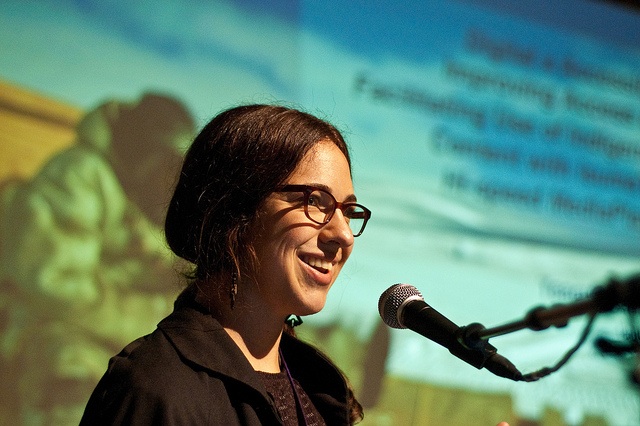In Friday’s first session called “It’s Not a Dead Collection, it’s a Dynamic Database”, media archivist and researcher Teague Schneiter (US/CA) took off with an elaboration about the ‘IsumaTV‘ project she’s currently working on. The people behind this initiative aim to set up an accessible infrastructure for streaming and uploading video content in indigenous subcultures. This is not only a technological challenge, but also requires a lot of media literacy within these communities. Other than with traditional heritages, it doesn’t focus on the long-term storage but instead prioritizes the accessibility of the users.
When it comes to the technological part of accessibility, the project would require a solid approach to work for the across different communities. Since the Inuit areas are largely isolated from ‘regular’ broadband services (the costs / bandwidth speed ratio is one of the aspects that widens the ‘digital divide’), the organisation introduced special media boxes into these indigenous communities. Through this local server network, the IsumaTV network performs much better than mainstream platforms like YouTube or Facebook would have. Moreover, having a stand-alone video platform overall increases the feeling of (reclaiming) ownership, “it helps with having a good relationship with the users.” Even though the technological trade-off is that the network updates with a delay of about a week, this is still acceptable for a project with a goal to preserve cultural heritage.
In the end, the project seems very worthwhile. Especially in the “era of of rapid change, [in which] indigenous groups seek to preserve their subculture”. Since the project started in 2008, over 2000 videos in more than 41 languages have been uploaded as well as pictures and text. Content-wise, it proves to be valuable to have the locals themselves act as curators, instead of having slightly related ‘outsiders’ maintain the archives. The fact that the communities rely mainly on verbal communications is another point that video creates a lot more insight into the different cultures.
Future plans with this initiative are to attract more sponsors like repositories, institutes, museums and participatory media (especially now the Canadian government has cut the budget), as well as to add crowd-source (subtitling or voice-over) features as well as further improving the network its accessibility.



